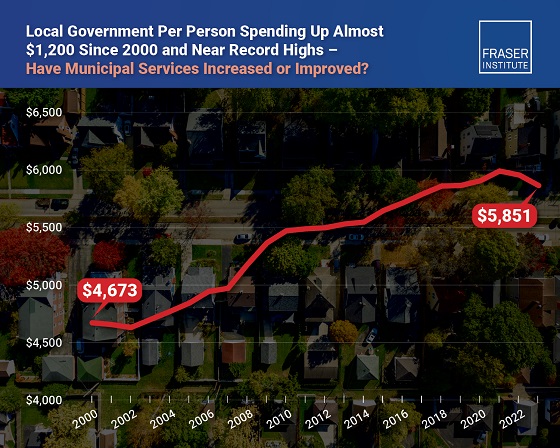Crime
Two month investigation leads to record Meth Seizure in Medicine Hat

July 17, 2019
Record Methamphetamine Seizure
in Medicine Hat
Medicine Hat… A two-month investigation by ALERT’s Medicine Hat organized crime team has resulted in what is believed to be the largest methamphetamine seizure in the city’s history. Five people were arrested, and more than $120,000 worth of drugs and cash were seized.
On July 13, 2019, with the assistance of Medicine Hat Police Service, ALERT investigators executed search warrants at two residences in Medicine Hat, arresting four people. That same day, they also stopped a vehicle along the Trans-Canada Highway near Brooks and arrested one person with the help of Brooks RCMP.
Over the course of the investigation, which started in May 2019, the following items were seized:
- 1.13 kilograms of methamphetamine;
- 156 grams of cocaine;
- 7 grams of psilocybin mushrooms;
- 207 tablets of illicit prescription drugs;
- three cans of pepper spray;
- a replica firearm; and
- $34,145 cash proceeds of crime.

This methamphetamine seizure exceeds the previous record for Medicine Hat, which the ALERT organized crime team set in December 2017 when 1.02 kilograms of meth were seized during a vehicle stop just inside city limits.
“The presence of methamphetamine has a detrimental effect not only on drug users, but also on the overall safety of citizens of Medicine Hat,” said Insp. Tim McGough, MHPS.
A total of 28 criminal charges have been laid against the five people arrested:
- Rosalind Blade, a 65-year-old woman from Medicine Hat
- Possession of a controlled substance for the purpose of trafficking (x2)
- Possession of a controlled substance (x2)
- Possession of proceeds of crime
- Breach of recognizance (x5)
- Bobby-Jo Blade, a 38-year-old woman from Medicine Hat
- Trafficking a controlled substance (x5)
- Possession of a controlled substance for the purpose of trafficking (x3)
- Possession of a controlled substance (x2)
- Possession of proceeds of crime (x2)
- Possession of a weapon dangerous to the public
- Angie Blade, a 25-year-old woman from Medicine Hat
- Breach of recognizance
- Harley Simons, a 44-year-old man from Medicine Hat
- Possession of a controlled substance for the purpose of trafficking (x3)
- Guled Shideh, a 34-year-old man from Edmonton
- Possession of proceeds of crime
Members of the public who suspect drug or gang activity in their community can call local police, or contact Crime Stoppers at 1-800-222-TIPS (8477). Crime Stoppers is always anonymous. Medicine Hat residents can also submit tips anonymously through the Medicine Hat Police Service mobile app, which is free to download and available for both Apple and Android devices.
ALERT was established and is funded by the Alberta Government and is a compilation of the province’s most sophisticated law enforcement resources committed to tackling serious and organized crime. Members of Calgary Police Service, Edmonton Police Service, Lethbridge Police Service, Medicine Hat Police Service, and RCMP work in ALERT.
Crime
Bryan Kohberger avoids death penalty in brutal killing of four Idaho students

Quick Hit:
Bryan Kohberger will plead guilty to murdering four Idaho college students, avoiding a death sentence but leaving victims’ families without answers. The plea deal means he’ll spend life in prison without ever explaining why he committed the brutal 2022 killings.
Key Details:
- Kohberger will plead guilty at a hearing scheduled for Wednesday at 11 a.m. local time.
- The plea deal removes the possibility of death by firing squad but ensures life in prison without parole.
- Victims’ families say the state “failed” them by agreeing to a deal that denies them an explanation for the murders.
Diving Deeper:
Bryan Kohberger, a former PhD criminology student at Washington State University, is expected to plead guilty to the November 2022 murders of four University of Idaho students, sparing himself the death penalty but also avoiding any explanation for his motive. Idaho defense attorney Edwina Elcox told the New York Post that under the plea, Kohberger will have to admit to the killings but won’t have to provide a reason for his actions. “There is no requirement that he says why for a plea,” Elcox explained.
Prosecutors reached the plea deal just weeks before the scheduled trial, which many believed would have revealed the full details and motives behind the shocking quadruple homicide. Kohberger is accused of murdering Kaylee Goncalves, 21; Madison Mogen, 21; Ethan Chapin, 20; and Xana Kernodle, 20, with a military-style Ka-Bar knife as they slept in their off-campus home in Moscow, Idaho. His DNA was allegedly found on a knife sheath left at the scene.
The Goncalves family blasted the state for the deal, saying, “They have failed us.” They had hoped a trial would uncover why Kohberger targeted their daughter and her friends. Prosecutors, however, argued that the plea ensures a guaranteed conviction and prevents the years of appeals that typically follow a death sentence, providing a sense of finality and keeping Kohberger out of the community forever.
Sentencing will not take place for several weeks following Wednesday’s hearing, which is expected to last about an hour as the judge confirms the plea agreement is executed properly. While the families may find some closure in knowing Kohberger will never be free again, they are left without the one thing a trial could have provided: answers.
(AP Photo/Matt Rourke, Pool)
Crime
National Health Care Fraud Takedown Results in 324 Defendants Charged in Connection with Over $14.6 Billion in Alleged Fraud

A 50-district dragnet uncovers transnational fraud, AI-driven deception, and systemic theft from Medicare, Medicaid, and U.S. taxpayers totaling over $14.6 billion
The Department of Justice announced Monday the outcome of the 2025 National Health Care Fraud Takedown, the largest coordinated enforcement action against health care fraud in U.S. history. Federal prosecutors have filed criminal charges against 324 individuals across 50 federal judicial districts and 12 State Attorneys General’s Offices, including 96 licensed medical professionals—among them doctors, nurse practitioners, and pharmacists. The defendants stand accused of orchestrating fraudulent schemes amounting to more than $14.6 billion in intended losses to Medicare, Medicaid, and other federally funded programs.

This historic enforcement action more than doubles the previous national record of $6 billion. As part of this effort, federal and state authorities have seized over $245 million in cash, luxury vehicles, cryptocurrency, and other high-value assets. The Centers for Medicare & Medicaid Services (CMS) separately reported that it successfully prevented more than $4 billion in fraudulent payments in the months leading up to the Takedown. CMS also confirmed that it suspended or revoked the billing privileges of 205 providers linked to fraudulent activity. In the civil domain, federal agencies filed actions against 20 defendants tied to $14.2 million in alleged fraud and finalized civil settlements with an additional 106 defendants, totaling $34.3 million in recovered funds.
The Takedown was led by the Health Care Fraud Unit of the DOJ Criminal Division’s Fraud Section and carried out in close coordination with U.S. Attorneys’ Offices nationwide, the Department of Health and Human Services Office of Inspector General (HHS-OIG), the Federal Bureau of Investigation (FBI), the Drug Enforcement Administration (DEA), and multiple state law enforcement agencies. Medicaid Fraud Control Units in 18 states also played a central role in investigating and prosecuting the cases.
In remarks accompanying the announcement, Secretary of Health and Human Services Robert F. Kennedy Jr. emphasized that the agency would aggressively work with law enforcement to eliminate the “pervasive health care fraud that drove up costs and harmed patients under the former administration.” Attorney General Pamela Bondi echoed the urgency, calling the action “justice delivered to those who steal from taxpayers and endanger lives.” Matthew R. Galeotti, head of the Justice Department’s Criminal Division, underscored the gravity of the crimes targeted, noting that fraudulent schemes often lead not only to financial losses but also to direct patient harm, including medically unnecessary procedures and worsened addiction outcomes.
FBI Director Kash Patel emphasized that this Takedown represents the largest in the bureau’s history, highlighting the theft of more than $13 billion from federal health programs. Acting Inspector General Juliet T. Hodgkins of HHS-OIG described the scale of harm as unprecedented and reaffirmed the agency’s commitment to safeguarding the public.
Among the most significant components of this national operation was Operation Gold Rush, which uncovered a sophisticated transnational conspiracy responsible for over $10 billion in fraudulent Medicare claims. The scheme was orchestrated by foreign nationals who, acting as a coordinated criminal enterprise, acquired more than 30 medical supply companies across the United States. These companies had already been enrolled in Medicare, and were then used to funnel false claims for urinary catheters and other durable medical equipment. Stolen identities of over one million Americans were used to submit these claims, which had not been requested by patients, nor ordered by physicians.
The conspiracy relied on straw owners sent from Russia and Estonia to the U.S., who were directed by co-conspirators communicating through encrypted channels. Using fraudulent documentation, these straw owners opened U.S. bank accounts for laundering proceeds. Though the organization submitted over $10.6 billion in claims, CMS successfully blocked most of the payments. Only approximately $41 million reached the conspirators via Medicare, but approximately $900 million was disbursed by Medicare supplemental insurers before the fraud was detected.
Four individuals were arrested in Estonia and eight others were apprehended at major U.S. airports and border crossings as they attempted to flee. Law enforcement seized approximately $27.7 million in fraud proceeds from this operation.

Federal prosecutors filed related charges in five districts: the Central District of California, the Middle District of Florida, the Northern District of Illinois, the District of New Jersey, and the Eastern District of New York.
In a separate scheme centered in Illinois, the Department brought charges against five individuals, including two executives from Pakistani marketing firms, who used artificial intelligence to generate fake audio recordings of Medicare beneficiaries purporting to consent to receive medical equipment. This fraudulent data was sold to laboratories and equipment suppliers, which used it to file $703 million in false claims. Approximately $418 million was ultimately paid out on these claims, and the government has so far seized $44.7 million in related assets. The fraud involved not only AI-based deception but also the illegal sale and laundering of stolen personal health information.
Another case exposed a billing company executive based in Pakistan and the United Arab Emirates who conspired with addiction treatment centers to submit approximately $650 million in fraudulent claims to Arizona Medicaid. Some services billed were never rendered, and others were so deficient as to provide no therapeutic value. The operation targeted vulnerable individuals, including members of Native American tribes and the homeless. Kickbacks were paid for patient referrals, and the executive used at least $25 million in illicit funds to purchase a $2.9 million home in Dubai.

The Department also charged 49 defendants in connection with over $1.17 billion in fraudulent claims tied to telemedicine and genetic testing. In one Florida case, an owner of both telemedicine and durable medical equipment companies orchestrated a $46 million scheme involving deceptive telemarketing campaigns that generated unauthorized genetic testing and equipment claims. The Department continues to prioritize cases involving telehealth-based fraud, which often exploits unwitting patients through misrepresented or manufactured consent.
Prescription opioid diversion was another central focus of the Takedown. A total of 74 defendants, including 44 licensed medical professionals, were charged across 58 criminal cases for illegally distributing more than 15 million opioid pills. One Texas pharmacy alone was responsible for over 3 million of these pills, which included highly addictive substances such as oxycodone, hydrocodone, and carisoprodol. The DEA concurrently announced 93 administrative actions to revoke licenses and registrations of pharmacies and providers implicated in the unlawful handling of controlled substances.
Other cases include a $28.7 million scheme in Tennessee involving medications falsely billed to the Federal Employees’ Compensation Fund, where prescriptions were neither authorized by physicians nor dispensed as claimed. In separate indictments filed in Washington and California, medical providers were charged with stealing fentanyl and hydrocodone intended for pediatric patients under anesthesia.
The geographic scope of the Takedown was vast. In total, 189 federal cases were filed across all 50 federal judicial districts, and 91 state-level cases were brought in 12 states by participating Attorneys General. This unprecedented coordination underscores the national impact and bipartisan support for rooting out fraud in American health care systems.
To enhance ongoing efforts, the Department also announced the establishment of a new Health Care Fraud Data Fusion Center.

This joint initiative brings together specialists from the DOJ’s Health Care Fraud Unit, HHS-OIG, FBI, and CMS to leverage cloud computing, artificial intelligence, and large-scale data analytics to detect emergent fraud patterns. The Fusion Center aligns with Executive Order 14243, “Stopping Waste, Fraud, and Abuse by Eliminating Information Silos,” which mandates interagency cooperation and data-sharing to reduce redundancy and increase efficiency in enforcement.
Principal Assistant Deputy Chief Jacob Foster, Assistant Deputy Chief Rebecca Yuan, Trial Attorney Miriam L. Glaser Dauermann, and Data Analyst Elizabeth Nolte coordinated this year’s Takedown from within the DOJ’s Health Care Fraud Unit. Prosecutors from the National Rapid Response team and regional Strike Forces in 27 districts led casework alongside U.S. Attorneys’ Offices and 18 state Medicaid Fraud Control Units. Additional support came from the Department of Labor, VA-OIG, IRS Criminal Investigation, Homeland Security Investigations, the Defense Criminal Investigative Service, the Office of Personnel Management, the United States Postal Service OIG, and numerous other federal and local agencies.
Image sources: US DOJ
-

 Crime2 days ago
Crime2 days agoNational Health Care Fraud Takedown Results in 324 Defendants Charged in Connection with Over $14.6 Billion in Alleged Fraud
-

 Health2 days ago
Health2 days agoRFK Jr. Unloads Disturbing Vaccine Secrets on Tucker—And Surprises Everyone on Trump
-

 Business1 day ago
Business1 day agoElon Musk slams Trump’s ‘Big Beautiful Bill,’ calls for new political party
-

 Business11 hours ago
Business11 hours agoLatest shakedown attempt by Canada Post underscores need for privatization
-

 Business11 hours ago
Business11 hours agoWhy it’s time to repeal the oil tanker ban on B.C.’s north coast
-

 Censorship Industrial Complex1 day ago
Censorship Industrial Complex1 day agoGlobal media alliance colluded with foreign nations to crush free speech in America: House report
-

 International19 hours ago
International19 hours agoCBS settles with Trump over doctored 60 Minutes Harris interview
-

 Energy11 hours ago
Energy11 hours agoIf Canada Wants to be the World’s Energy Partner, We Need to Act Like It
 By
By 





